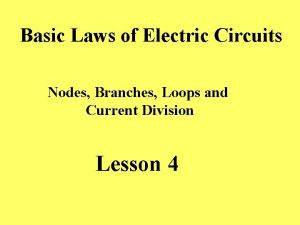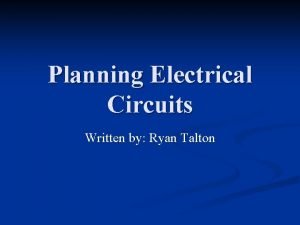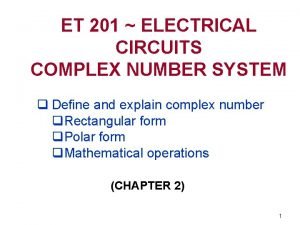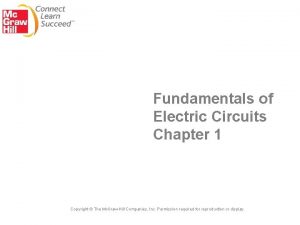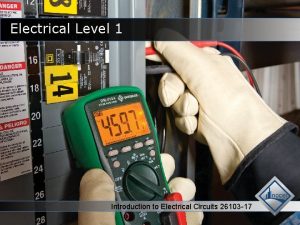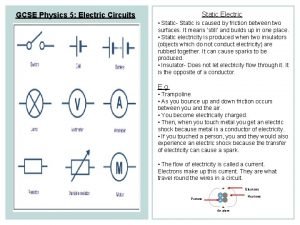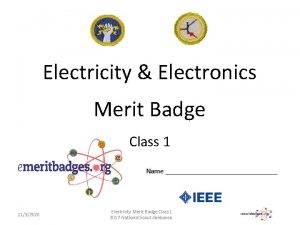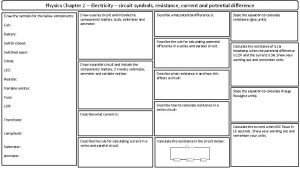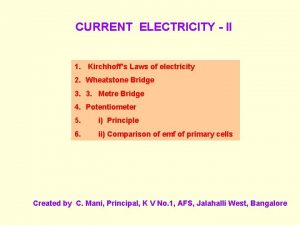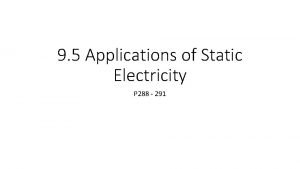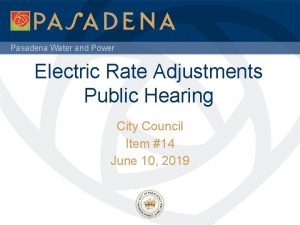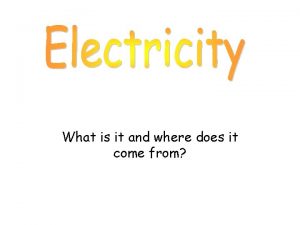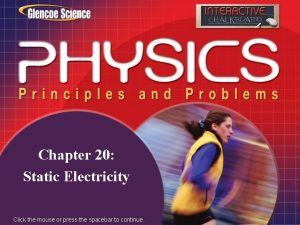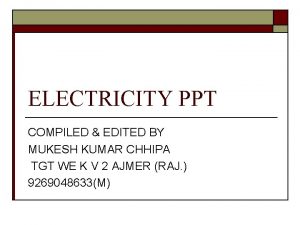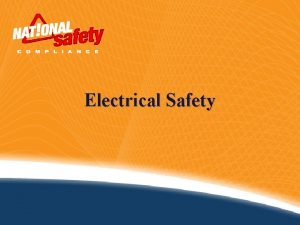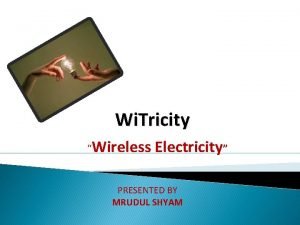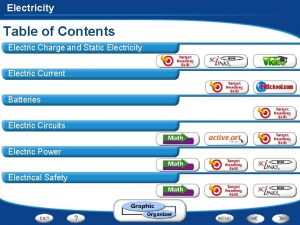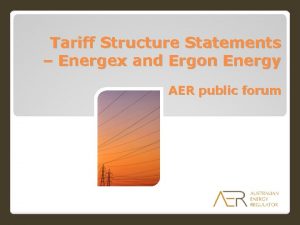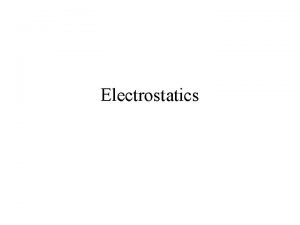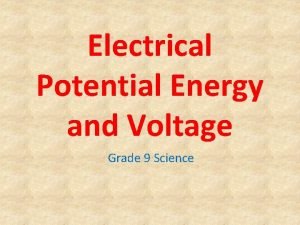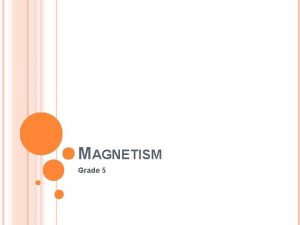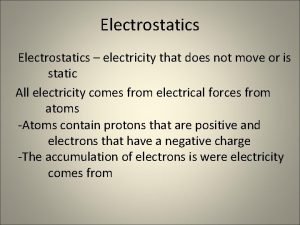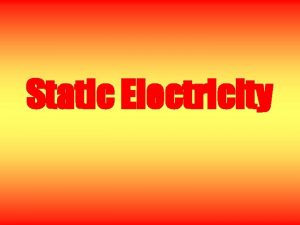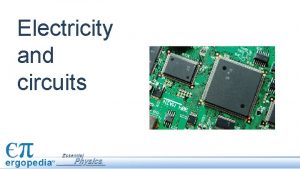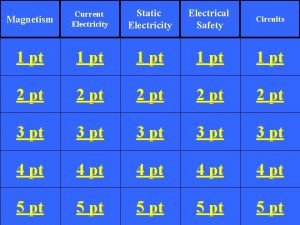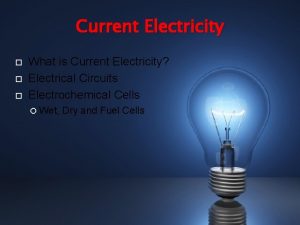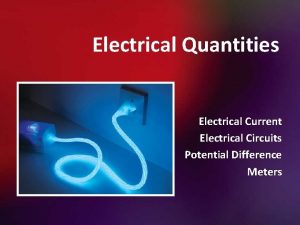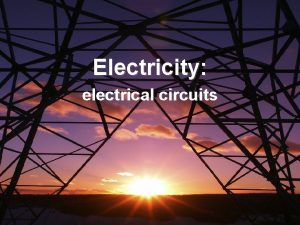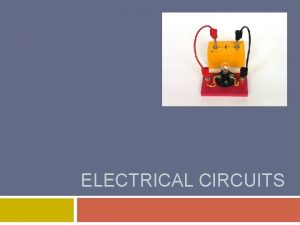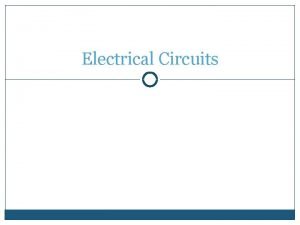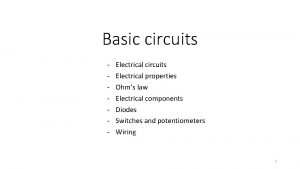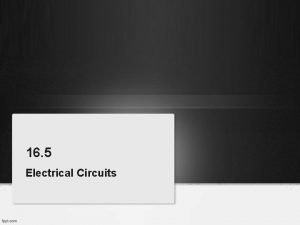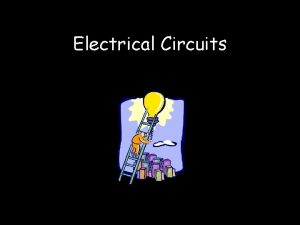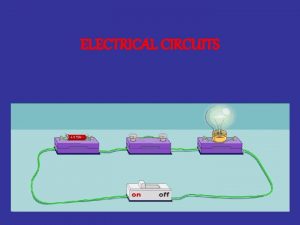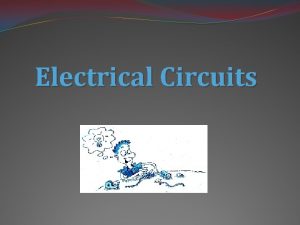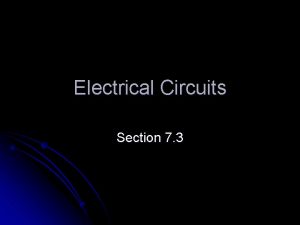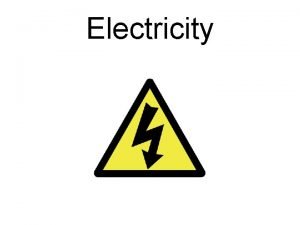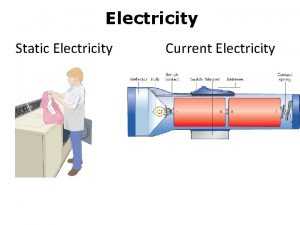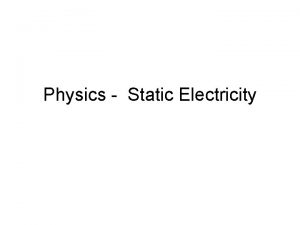Electricity 7 3 Circuits Electrical Circuits n Circuits



































- Slides: 35

Electricity 7 -3 Circuits

Electrical Circuits n Circuits rely on generators at power plants to produce a voltage difference across the outlet, causing the charge to move when the circuit is complete

Example n n n Hair dryer plugged into wall outlet Generator at power plant produces voltage difference Dryer and circuit in house contain conducting wires to carry current Hair dryer turns electrical energy into thermal energy and mechanical energy Unplug hair dryer opens circuit and breaks path of current

The Current in a Simple Circuit • A simple electric circuit contains a source of voltage difference, such as a battery, a device, such as a lightbulb, that has resistance, and conductors that connect the device to the battery terminals. • When the wires are connected to the battery terminals, current flows in the closed path.

Circuit Components A - battery B - switch C - light bulb D - resistor

Types of Circuits n Series circuit – the current has only one loop to flow through. • Series circuits are used in flashlights and some holiday lights.

Series Circuit n Current travels in a single path n Current is the same throughout circuit – lights are equal brightness n Each device receives a fraction of the total voltage - gets dimmer as lights are added

Series Circuit n Open circuit – if any part of a series circuit is disconnected, no current flows through the circuit n Example: holiday lights

Series Circuit

Holiday Lights – Series Circuit

Parallel Circuits n Parallel circuit – contains two or more • branches for current to move through. The current can flow through both or either of the branches. n Example: household circuits

Parallel Circuit

Parallel Circuits Advantage • When one branch of the circuit is opened, such as when you turn a light off, the current continues to flow through the other branches. Click box to play movie.

Household Circuits Household circuits mainly use parallel circuits connected in a logical network. n Electrical energy enters your home at the circuit breaker or fuse box and branches out to wall sockets, major appliances, and lights. n


Guards against overheating electric wires: n n n Electric fuse – contains a small piece of metal that melts if the current becomes too high, opening the circuit and stopping the flow of current. To enable current to flow again in the circuit, you must replace the blown fuse with a new one. Too many appliances in use at the same time is the most likely cause for the overheating of the circuit.

Household Fuse Box

Guards against overheating electric wires: n n Circuit breaker – contains a small piece of metal that bends when it gets hot, opening the circuit and stopping the flow of current. Circuit breakers usually can be reset by pushing the switch to its “on” position.

Circuit Breaker Box

Electric Power n Electrical energy is easily converted to mechanical, thermal, or light energy. n Electrical power – the rate at which electrical energy is converted to another form of energy.

Electrical Power n Electrical Power – rate at which electrical energy is converted to another form of energy P = power (W) P=I×V I = current (A) V = potential (voltage) difference (V)

Electrical Power n Electrical power is expressed in watts (W) n The unit for power is the watt (W). Because the watt is a small unit of power, electric power is often expressed in kilowatts (k. W). n One kilowatt equals 1, 000 watts.

Electrical Power n P (watts) = I (amperes) x V (volts) n To calculate the amount of energy an appliance uses: – The unit of electrical energy is the kilowatthour, which equals 1000 watts of power used for one hour

Electrical Power n Energy = power x time n E (k. Wh) = P (k. W) x t (h)

Electrical Power A calculator has a 0. 01 -A current flowing through it. It operates with a potential difference of 9 V. How much power does it use? GIVEN: WORK: I = 0. 01 A V=9 V P=? P=I·V P = (0. 01 A) (9 V) P = 0. 09 W P I V

Electrical Energy Electric companies charge by the amount of electrical energy used, rather than by the electric power used. n Electrical energy usually is measured in units of kilowatt hours (k. Wh) and can be calculated from this equation: n

Electrical Energy n Electrical Energy – energy use of an appliance depends on power required and time used E: energy (k. Wh) E=P×t P: power (k. W) t: time (h)

The Cost of Using Electrical Energy • The cost of using some household appliances is given in this table, where the cost per k. Wh is assumed to be $0. 09/k. Wh.

Electrical Energy A refrigerator is a major user of electrical power. If it uses 700 W and runs 10 hours each day, how much energy (in k. Wh) is used in one day? GIVEN: WORK: P = 700 W = 0. 7 k. W t = 10 h E E=? E=P·t E = (0. 7 k. W) (10 h) E = 7 k. Wh P t

Section Check Question 1 What is an open circuit? Answer An open circuit is a series circuit in which one part is disconnected. This prevents current from flowing through the circuit.

Section Check 3 Question 2 The rate at which electrical energy is converted to another form of energy is called _____. A. electrical fuse B. electrical switching C. electric power D. thermal energy

Section Check 3 Question 3 Which of the following equations is used to calculate electric power? A. B. C. D. P = IV P = I/V P = V/I P = AV

Section Check 3 Answer The answer is A. Electric power is equal to the current, I, multiplied by the voltage difference, V.

Why do homes have a fuse box or circuit breaker? It is there to make sure the electrical wires in our home do not get too hot and start fires. If the wires get too hot, they melt the piece of metal in the fuse or bend the piece of metal in the circuit.

How does it work? This opens the circuit and stops the flow of current. If we have a fuse box, we have to replace the melted fuse with a new one. If we have a circuit breaker, we only need to unplug some appliances and flip the switch in the breaker box.
 Electricity n
Electricity n Magnetism vocabulary
Magnetism vocabulary Static electricity and current electricity
Static electricity and current electricity What is a branch in electrical circuit
What is a branch in electrical circuit Planning electrical circuits
Planning electrical circuits Complex numbers in electrical circuits
Complex numbers in electrical circuits Types of elements in electrical circuits
Types of elements in electrical circuits Nccer introduction to electrical circuits
Nccer introduction to electrical circuits Parallel circuit vs series circuit
Parallel circuit vs series circuit Electrical circuits gcse
Electrical circuits gcse Series parallel circuit current
Series parallel circuit current Electrical merit badge
Electrical merit badge Physics circuit symbols
Physics circuit symbols Current electricity
Current electricity Where does electricity come from
Where does electricity come from Static electricity painting
Static electricity painting Pasadena municipal services water power
Pasadena municipal services water power Pros and cons of wind farms
Pros and cons of wind farms Why we need electricity
Why we need electricity Chapter 20 static electricity answers
Chapter 20 static electricity answers Wa electricity market
Wa electricity market Electricity merit badge
Electricity merit badge Scotland electricity demand
Scotland electricity demand Current electricity ppt
Current electricity ppt Electrical safety introduction
Electrical safety introduction Tricity electricity
Tricity electricity Electric current graphic organizer
Electric current graphic organizer Ergon electricity tariffs
Ergon electricity tariffs Electricity is all around us
Electricity is all around us Non conductors of electricity
Non conductors of electricity Magnetism grade 5
Magnetism grade 5 Chapter 12 basic electricity
Chapter 12 basic electricity Physics 241 purdue
Physics 241 purdue Electricity that does not move
Electricity that does not move Stationary electric charge
Stationary electric charge Nature of electricity
Nature of electricity



